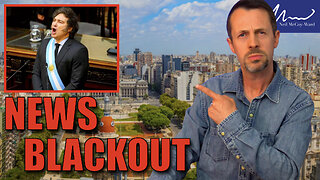Premium Only Content

The Italian Renaissance | The Recovery of Antiquity (Lecture 6)
Lecture 6: For Italians, the world of ancient Rome was their national history, one whose monuments, both physical and cultural, were everywhere to be seen. This rich tradition was increasingly regarded as an intellectual heritage to be mined for contemporary use, especially by lay rhetoricians and notaries who practiced the art of letter writing known as the ars dictaminis.
The clear and elegant Latin of the ancients could be recovered to replace the corrupted medieval Latin then in use; the ideals of classical thought in politics and philosophy could inform the city-states of the peninsula; and the principles of art and architecture could create a more humane environment in which citizens might prosper. As a result, there was a desire to know the past and recover as much of the ancient world as possible. Libraries were searched for lost ancient authors, and the discoveries were copied and edited for modern readers. The glory of the ancient past was, then, a model to be emulated and a golden age to be recovered so that its wisdom could be applied to the circumstances of Italy in the second half of the 14th century.
Primary Source Texts:
Kenneth R. Bartlett, “Humanism,” pp. 84–95, and “Art and Architecture,” pp. 223–239, in The Civilization of the Italian Renaissance.
Secondary Sources:
Roberto Weiss, The Renaissance Discovery of Classical Antiquity.
Supplementary Reading:
Leonard Barkan, Unearthing the Past: Archaeology and Aesthetics in the Making of Renaissance Culture.
Phyllis Gordan, Two Renaissance Book Hunters: The Letters of Poggius Bracciolini to Nicolaus de Niccolis.
-
 32:59
32:59
The Great Courses
14 days agoHow the Medici Shaped the Renaissance | Cosimo I de' Medici: Grand Duke of Tuscany (Lecture 12)
1402 -
 1:59:27
1:59:27
Jeff Ahern
3 hours ago $1.41 earnedFriday Freak out with Jeff Ahern (6am Pacific)
20.2K -
 1:56:07
1:56:07
Game On!
11 hours ago $0.67 earnedJosh Allen is the NFL MVP! It's not even close!
16.4K1 -
 13:05
13:05
Neil McCoy-Ward
2 hours agoWhy The Media Won't Tell You What Milei Did In Argentina...
17.6K1 -
 3:56:44
3:56:44
Alex Zedra
14 hours agoLIVE! Trying to get achievements in Devour
213K26 -
 2:00:43
2:00:43
The Quartering
17 hours agoThe MAGA Wars Have Begun! Vivek & Elon Get Massive Backlash & Much More
221K94 -
 1:25:53
1:25:53
Kim Iversen
3 days agoStriking Back: Taking on the ADL’s Anti-Free Speech Agenda
143K134 -
 49:35
49:35
Donald Trump Jr.
21 hours agoA New Golden Age: Countdown to Inauguration Day | TRIGGERED Ep.202
260K275 -
 1:14:34
1:14:34
Michael Franzese
19 hours agoWhat's Behind Biden's Shocking Death Row Pardons?
101K58 -
 9:49
9:49
Tundra Tactical
18 hours ago $29.09 earnedThe Best Tundra Clips from 2024 Part 1.
183K15